Situated in the North Eastern Indian state of Assam, the district of Jorhat and Mariani sub division - The Hoolock Gibbon Sanctuary could potentially be India’s first ever critical wildlife habitat.
I write this post because as a child, i grew up adjoining the Hoolock Gibbon Sanctuary boundary and to see it being proposed, to be listed as one of India’s critical wildlife habitat is such a joy.
What is a critical wildlife habitat?
Going with the proposed Government of India (Ministry of Environment & Forest) guidelines for Critical Wildlife Habitat, its criteria and processes states:
Aim of maintaining viable population of tiger and other fauna / flora species to conserve biodiversity and life support ecological systems in natural wilderness areas, following criteria should be followed:
- Delineation of critical tiger/wildlife habitat (inviolate space/habitat) required for sustenance of a viable population of tigers and other wild animals in tiger reserves and protected areas vis-a-vis the wildlife (Protection) Act 1972, as amended in 2006, and the Scheduled Tribes and other Traditional Forest Dwellers (Recognition of Forest Rights) Act, 2006.
- A minimum inviolate space of 800 - 1000 sq.km should be maintained as the inviolate area to support viable population of tigers in tiger landscapes, based on tiger life history parameters, territory size and population viability analysis. For National Parks and Sanctuaries, other then Tiger Reserves, critical wildlife habitat areas should be demarcated on the basis of species area curve specific for each bio-geographical area, as classified by the Wildlife Institute of India (Rodgers and Panwar, 1988). The size of the inviolate area within each critical habitat zone will be based on its potential to harbor viable populations of umbrella species (endemic species, top carnivores, mega-herbivores, indicators, wild relatives of species of economic value, endangered and threatened, and migratory species). which would serve to conserve the entire biodiversity of the area.
- Besides National Parks and Sanctuaries, identified corridors of significant wildlife value should be examined according to the above criteria for delineation as critical wildlife habitat.
If we take the Gibbon Sanctuary situation and recently mentioned by Mr. Ranjit Kumar Das (Jorhat divisional forest officer) to journalist Smita Bhattacharyya of Kolkata based newspaper ‘The Telegraph’ on her 23rd Oct article - “The Gibbon should be included in the list of India’s critical wildlife habitat. According to the Tribal Land Act 2005, bonafide forest dwellers cannot be evicted and will be the first to benefit from government’s forest schemes. But there has been no encroachment or settlement in the Gibbon since it was declared a sanctuary in 1997. This cannot be said of either Kaziranga or Manas National Park”. When asked about settlement: “Though there is no settlement as such, there is an army base which takes up 4sqkm of the 20sqkm sanctuary. The army base was established during the Chinese war of aggression in 1963 and there is no place in the vicinity to shift it. The base, however, provides protection against encroachment and poachers,” said by Das to the reporter.
So what makes this Sanctuary so unique?
The Sanctuary - Currently known as the Hoollongapar Gibbon Sanctuary is an isolated Protected Area of a total area of 20sq kms. The name of this sanctuary ‘Hoollongapar’ is derived from the domination of the upper canopies existing in the forest which are the Hollong Tree (Dipterocarpus macrocarpus) - thus Hollong from the name of the tree and ‘apar’ meaning ‘upper’ canopies.
Surrounded by mostly tea gardens and some village communities on its sides, it makes this area very special as most of the forest designation as a sanctuary came under the 1990′s through artificial regeneration for well stocked forest, resulting in a rich biodiversity to the area.
I have personally stayed for years adjoining this sanctuary as i grew up in one of the tea gardens that shared its boundary with this sanctuary.
With a total area of 20sq kms, it is India’s only reserve which host’s seven primate species which co-exist in this given space. According to a census conducted in 2010 by the Jorhat forest department, they recorded:
- 95 Hoolock Gibbons
- 25 Bengal Slow Loris
- 41 Assamese Rhesus Macaques
- 33 Golden Langurs
- 75 Pig-Tailed Macaques
- 154 Capped Langurs
- 174 Stump Tailed Macaques
These are the seven primate species co-existing in this habitat. Amongst these it is most famous for the Eastern Hoolock Gibbon (Hoolock leuconedys) - The only ape species found in India. Forest department census conducted in 2009 revealed five single and twenty five families of this endangered species.
Along with primates species, there are wild elephant herds using its corridors, bison, deer, leopard, giant malabar squirrel and a vast number of spectacular bird species found in the area.
I am very pleased to see this wilderness area from my childhood, transform into a well protected site and if included in the critical wildlife habitats of India, it will get better protection for the remaining wilderness we have for our future generation.











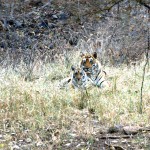


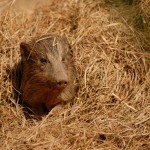




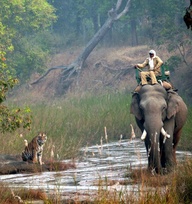
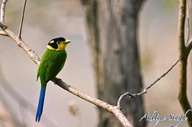


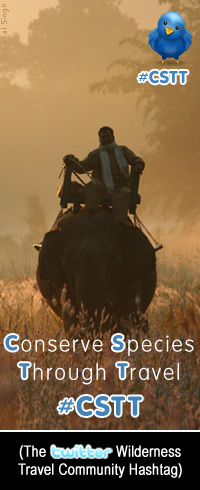



 Twitter
Twitter Facebook
Facebook RSS
RSS
Comments
Powered by Facebook Comments